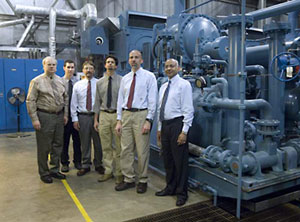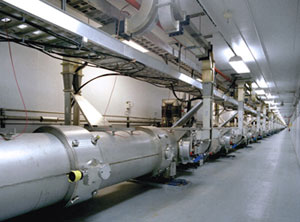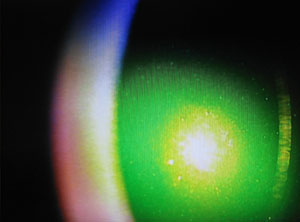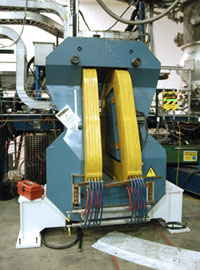|
|
|
Day 1: Earth Day Every Day - Jefferson Lab observes Earth Day every day with its business practices. Recycling Centers for paper, batteries, toner cartridges, aluminum cans and plastic bottles are distributed throughout the site, and scrap metal and other lab industrial waste is recycled. In procurements, the stockroom offers an array of recycled options and encourages the purchase of recycled and recyclable products. And motion-sensor lighting reduces power use in empty offices and conference rooms. |
 |
|
Day 2: Reducing Electricity - When it comes to energy savings, Jefferson Lab has given new meaning to dirt cheap. The lab uses a geothermal well system to control heating and cooling on two floors of one wing of its main administrative building. The system saves more than 515 million BTU of energy per year. That's the equivalent of about 23 tons of coal or roughly 3,900 gallons of heating oil. |
 |
|
Day 3: Reusing CEBAF - The planned upgrade of Jefferson Lab's scientific capabilities, the 12 GeV Upgrade, will build on the lab's existing footprint and reuse nearly all of the existing hardware to make possible the next generation of nuclear physics experiments. By doubling the accelerator's available energy, upgrading the equipment in three experimental halls, and building one additional hall, scientists will be able to continue their explorations of the heart of matter with unprecedented precision. |
|
|
|
Day 4: Recycling Hardware - Most experiments at Jefferson Lab recycle existing hardware for new experiments. For example, the BigBite spectrometer was originally used at the National Institute for Nuclear Physics and High Energy Physics in the Netherlands. Once its NIKHEF run was complete, Hall A Leader Kees de Jager brought it to the lab to enhance Hall A's research capabilities. The refurbished BigBite is now planned for use in more than a half-dozen experiments. |
 |
|
Day 5: Environmental Stewardship - A series of energy-saving processes invented by JLab engineers have revolutionized the way helium cryogenic (refrigeration) plants work, not only reducing electricity consumption at Jefferson Lab, but also at Brookhaven National Lab, Oak Ridge National Lab and NASA Johnson Space Center. The processes have nearly doubled refrigeration-equipment lifetime, while improving system reliability and efficiency. At JLab, this results in an electricity savings of $33,000 each month. The engineers who invented these processes were awarded a prestigious White House Closing the Circle Award in 2007. |
 |
|
Day 6: Superconducting Savings - To enable experimenters to probe deep inside the atom's nucleus with electrons, Jefferson Lab pioneered superconducting technology for accelerating electrons to high energy in efficient, cost-effective accelerators. Superconductivity allows electricity to flow through a conductor without resistance. Using superconducting technology, Jefferson Lab's CEBAF accelerator requires an average of 20 Megawatts of power to operate - compared to 60 Megawatts if it were not superconducting, enough power for 48,000 homes! |
 |
|
Day 7: Efficient Laser Light - The lab has leveraged its knowledge of building superconducting electron-accelerating technology to build the most powerful tunable laser in the world: the Jefferson Lab Free-Electron Laser. The FEL produces a range of laser light that you'd need hundreds of conventional lasers to make. And in the FEL, more than 90 percent of the energy input that doesn't come out as light in the first pass is recycled at high efficiency. |







